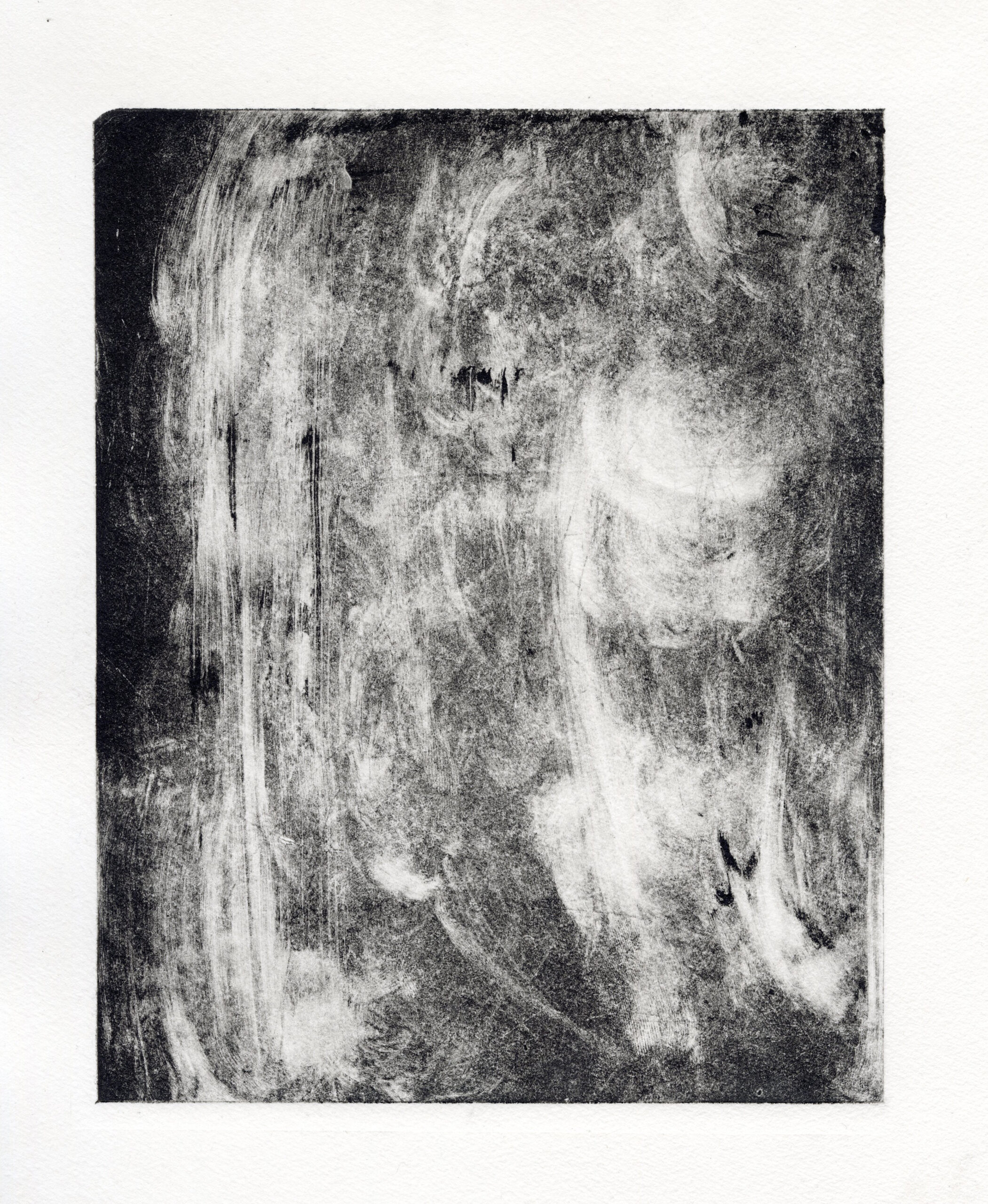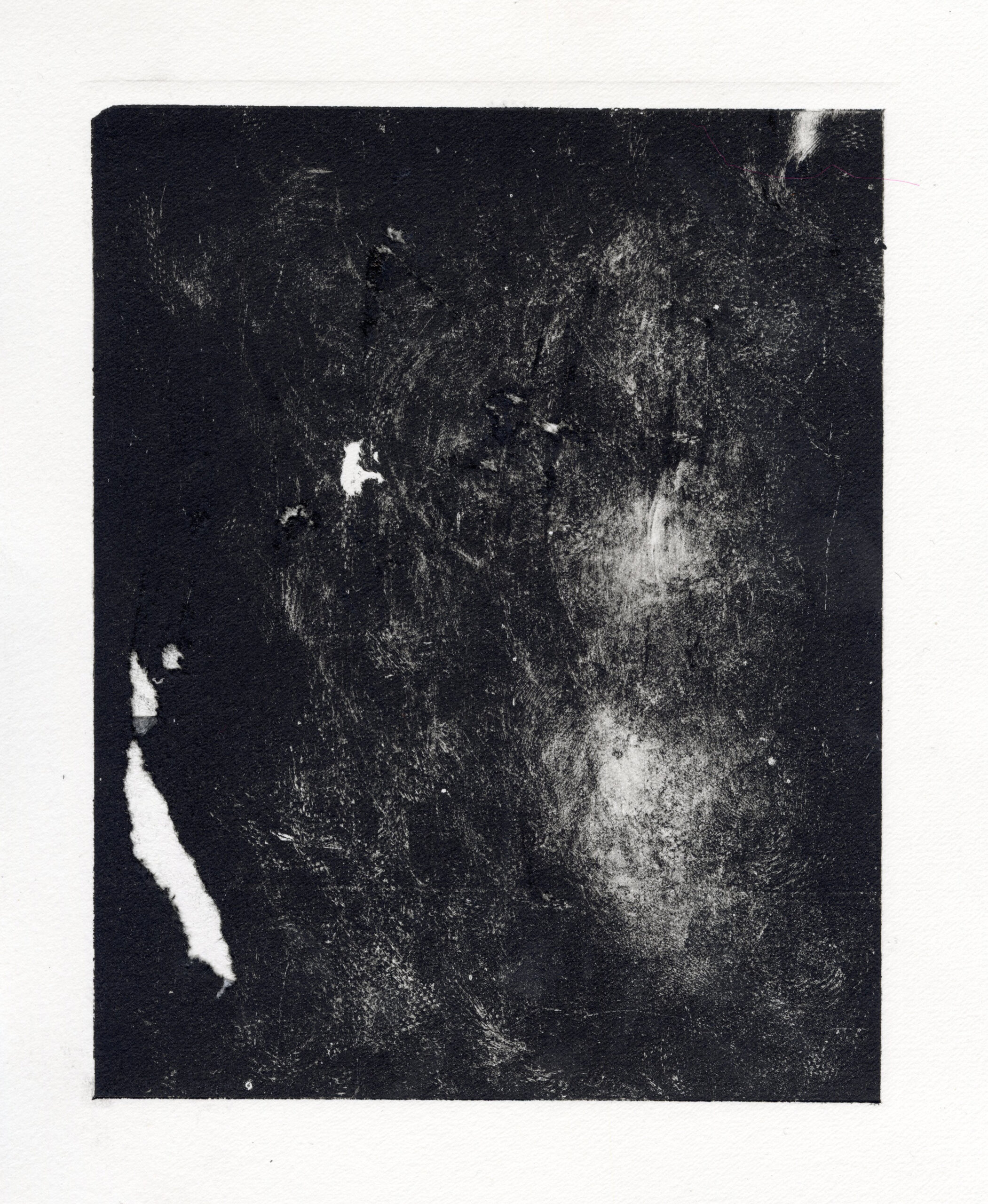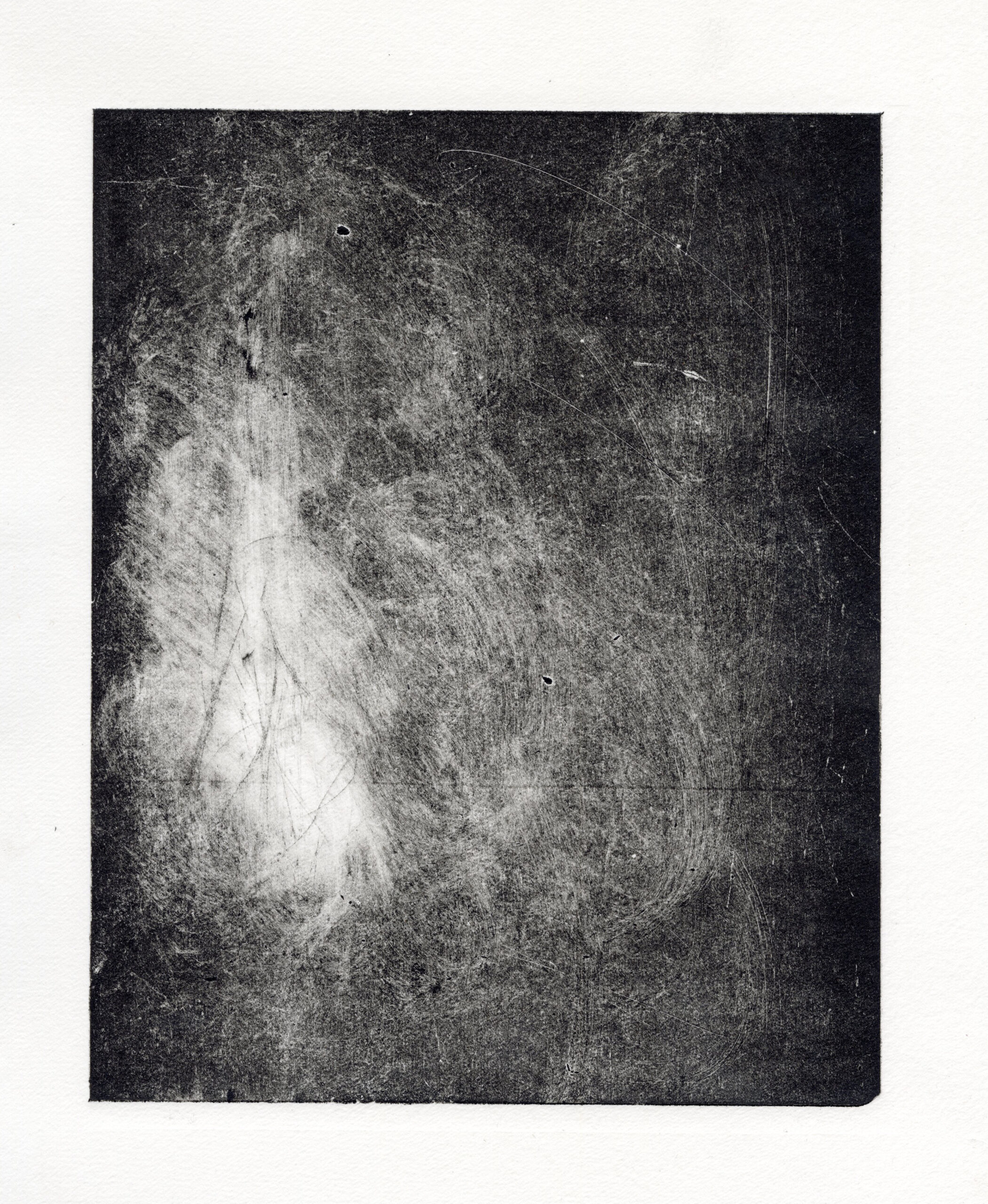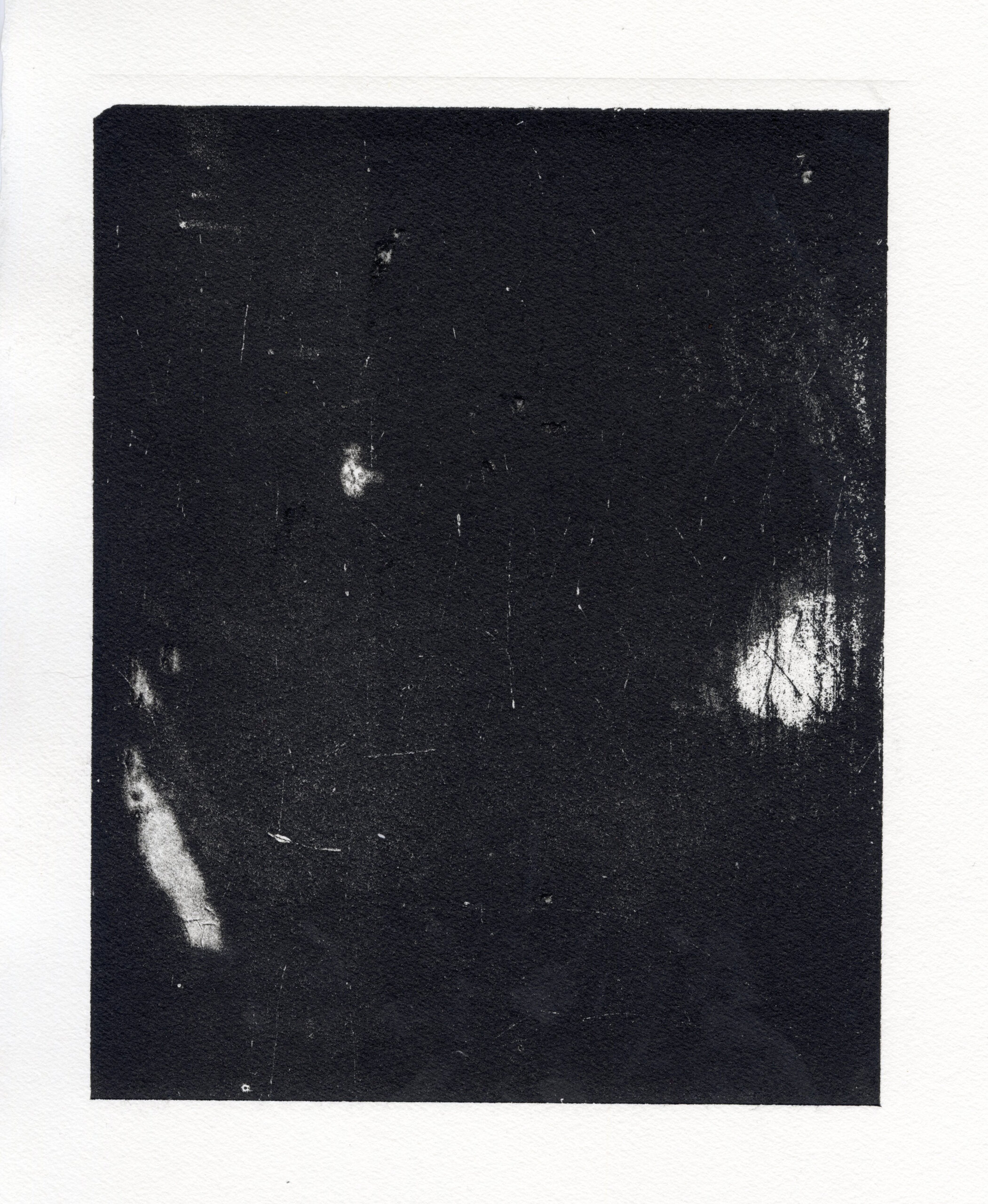Artists’ Proof
Curated by H Schenck
About the Artist
B. NYC – lives and works in Chicago.
Artist Statement
My practice embodies failed attempts at belonging.
On printmaking:
Fulfilled by the process
Homecoming, a process of return
The process never ends
Physical output is merely a pause – I always find myself craving more.
The process becomes a detached entity – no longer myself.
I look at it, and it stares back.
Foreign, disconnected, far away, entirely separate
Ex-lovers passing one another on the street after significant time apart, only knowing the ghosts of one another – strangers
Already past it – no longer my mirror, no longer a reflection of who I am
I’ve transcended who I once was.
That spark-moment of self-recognition, of newfound self-awareness, can never be re-experienced – a lost part of the self has been discovered and reintegrated into the body, forever.
Homecoming, always coming back to myself
Stop, breathe, listen
Consumption of me, consumption of self
Me, happy to see me
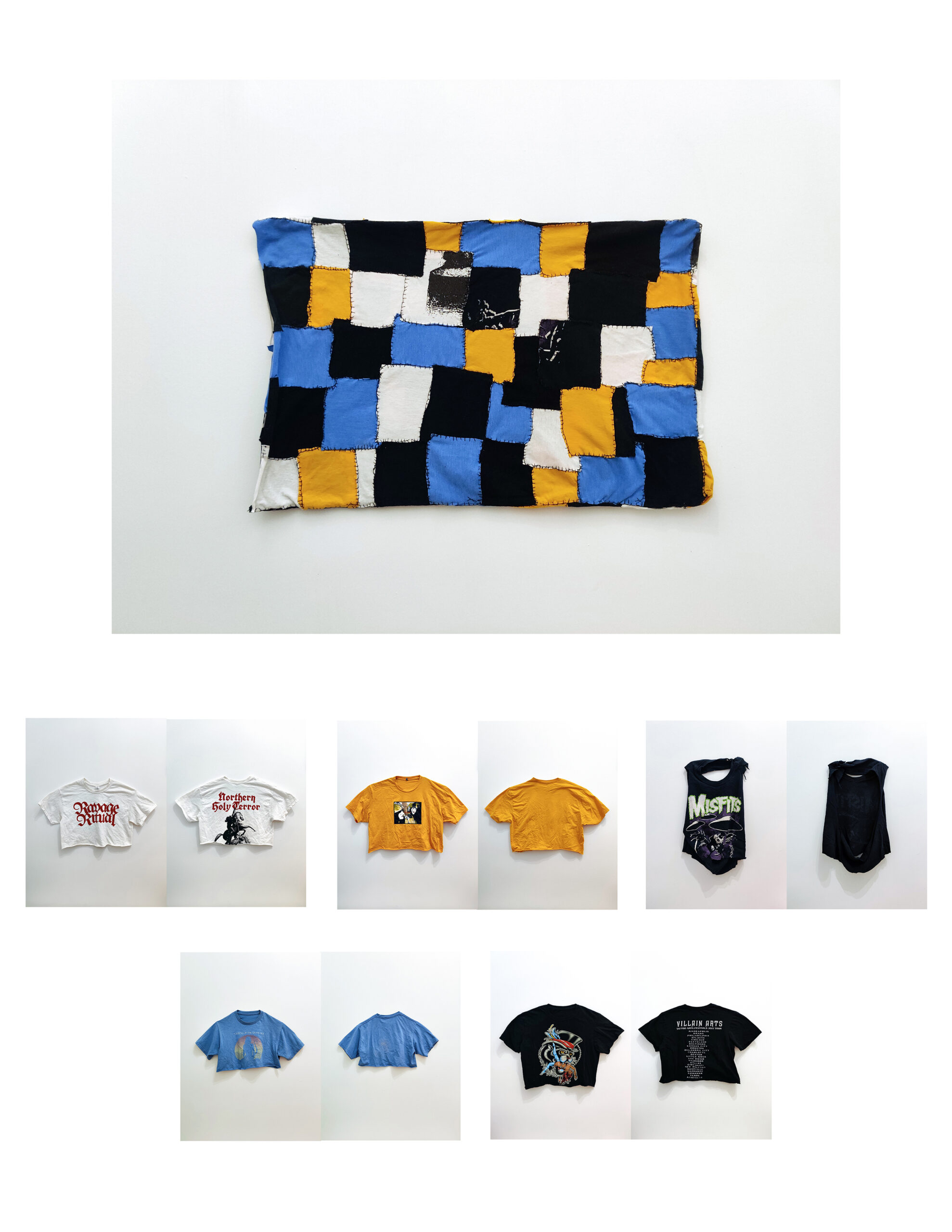
A Jagged Reunion
Performance
Pillowcase measures 20” x 26”
A hand sewn pillowcase made of fabric from the garments of past lovers; slept on every night until I came to the conclusion that the piece was pointless – I had no intent or interest in reuniting.
Documentation of garments taken after they were cropped to my proportions (claimed as my own).
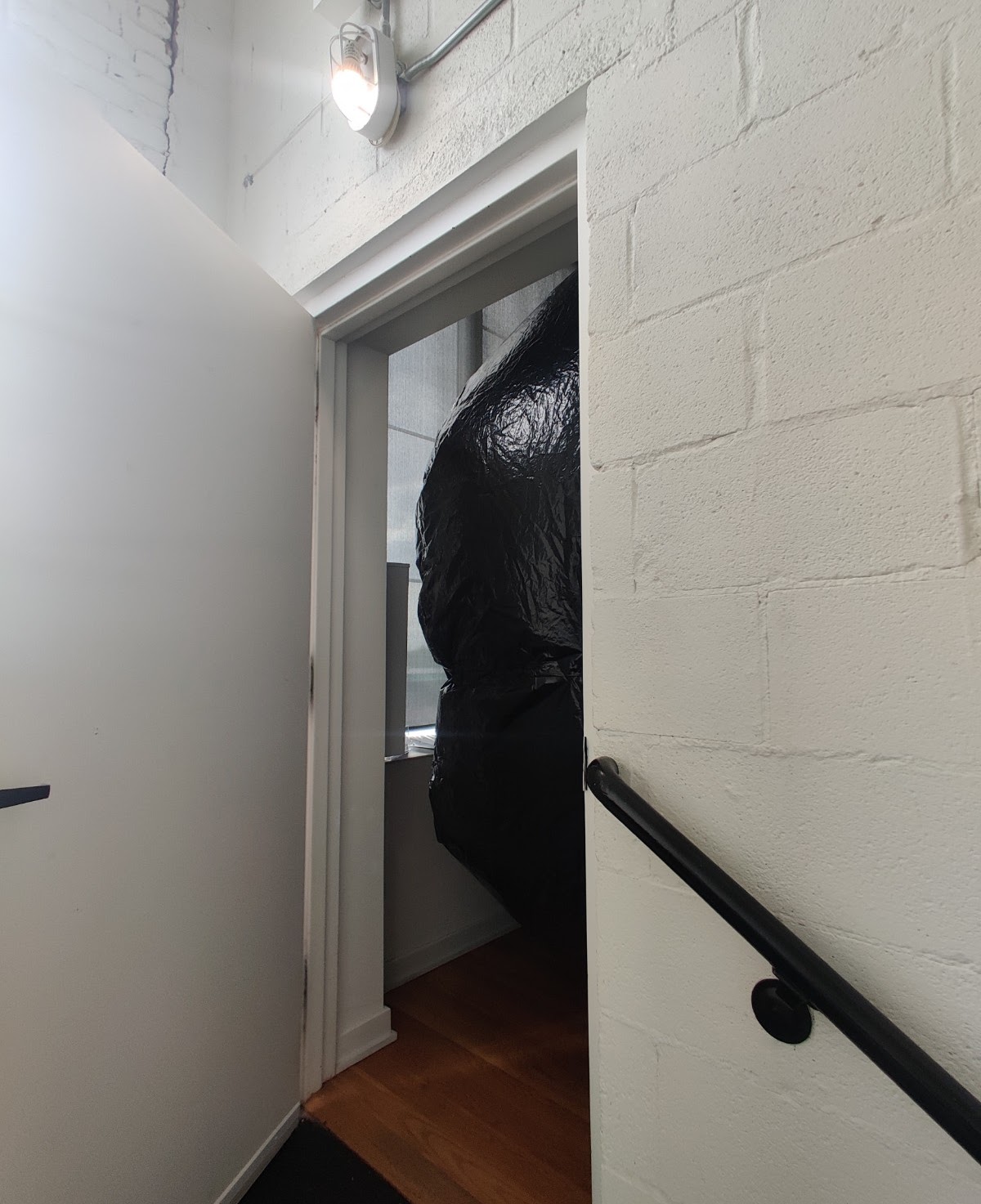
Untitled (Nicole Leung is too American to be Chinese and too Chinese to be American)
Performance
Dimensions variable
The piece turned into a heartbreaking (in retrospect, beautiful) irony, considering the institution’s intent and mission to uplift the Chinese American experience. The fan mechanism for the inflatable was broken by the mishandling of the work by the institution, the entire piece was dismantled without my prior consent, and the show was promptly closed without my knowledge after the fact (even with my specific instructions that this setback did not disrupt the intent of the piece).
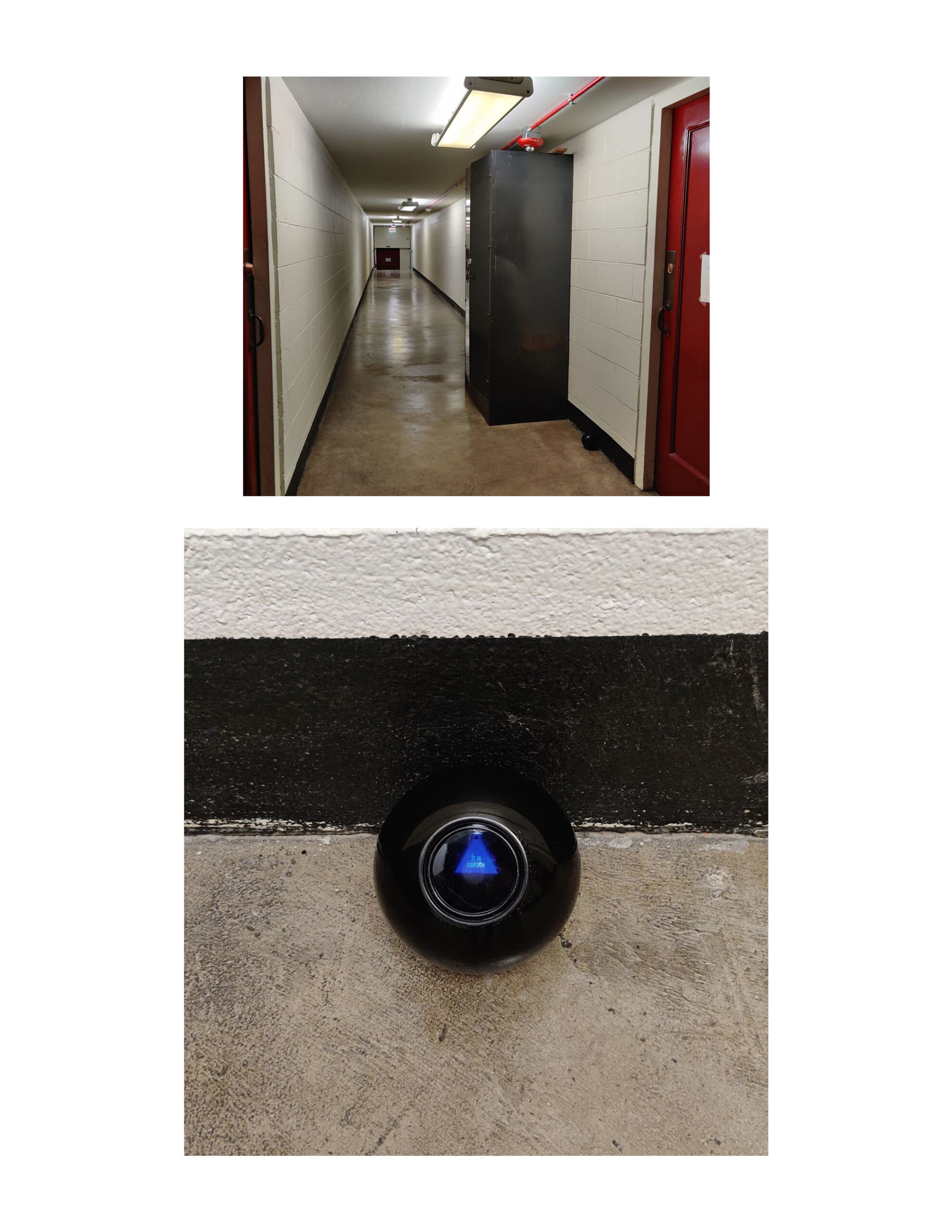
Untitled
Magic 8-balls
Each Magic 8-ball is 3.9” x 5.06” x 4”
Five magic 8-balls placed throughout the hallways and exhibition space, each turned upward to display the phrase, ‘It is certain.”
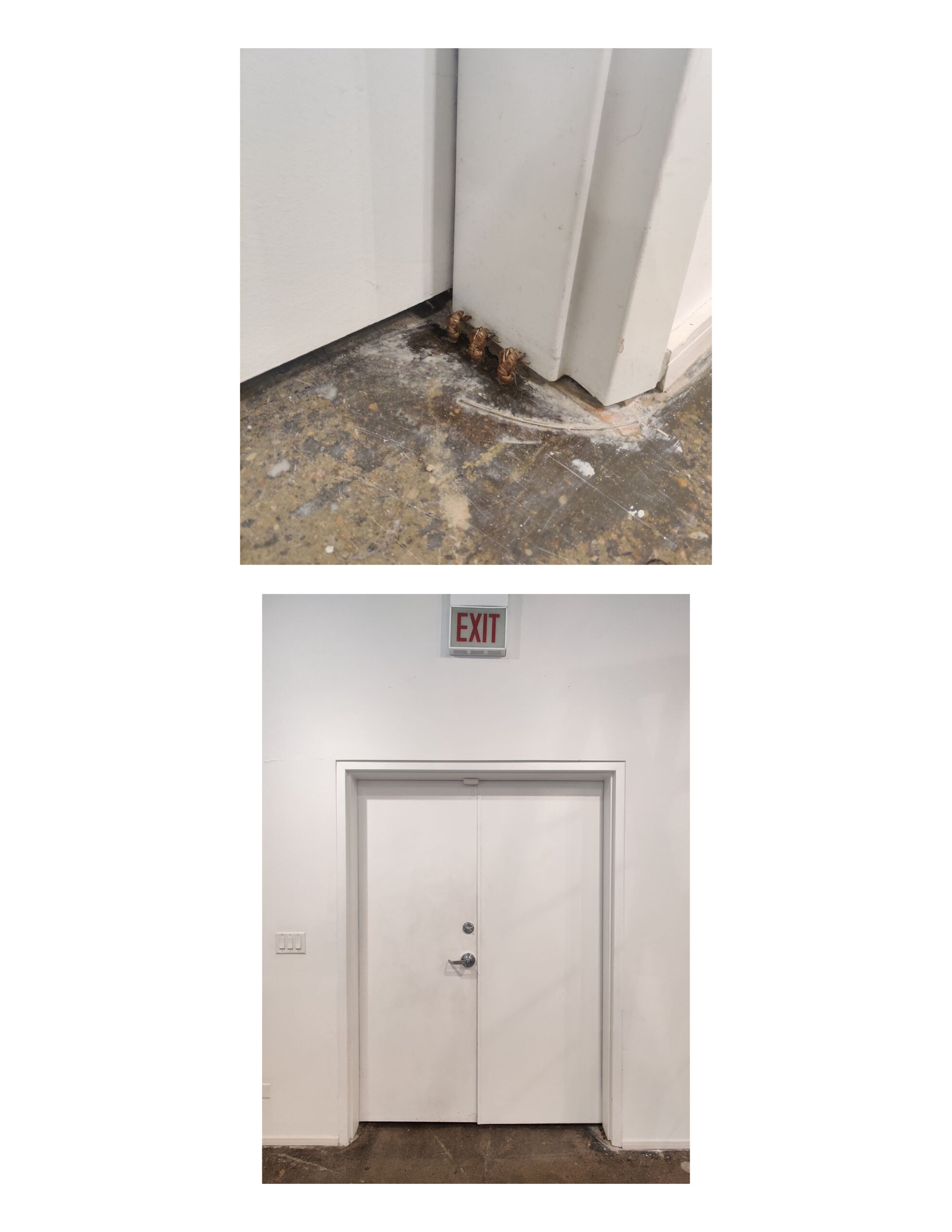
I Also Know the Way the Old Life Haunts the New
Cicada shells
Dimensions variable; each individual cicada shell is 1” long
Title of piece references the final line of Mary Oliver’s poem, “Benjamin, Who Came From Who Knows Where.”

Cruel Optimism
Two magnets; tape
Dimensions variable, but magnets must be taped down close enough together to repel one another
Two magnets with like poles facing one another, held down with tape. Title references the book “Cruel Optimism,” by Lauren Berlant. The more we desire something, the further away it gets.

This Could Build Us a Home
Lock inserted into key
About 1.5” long
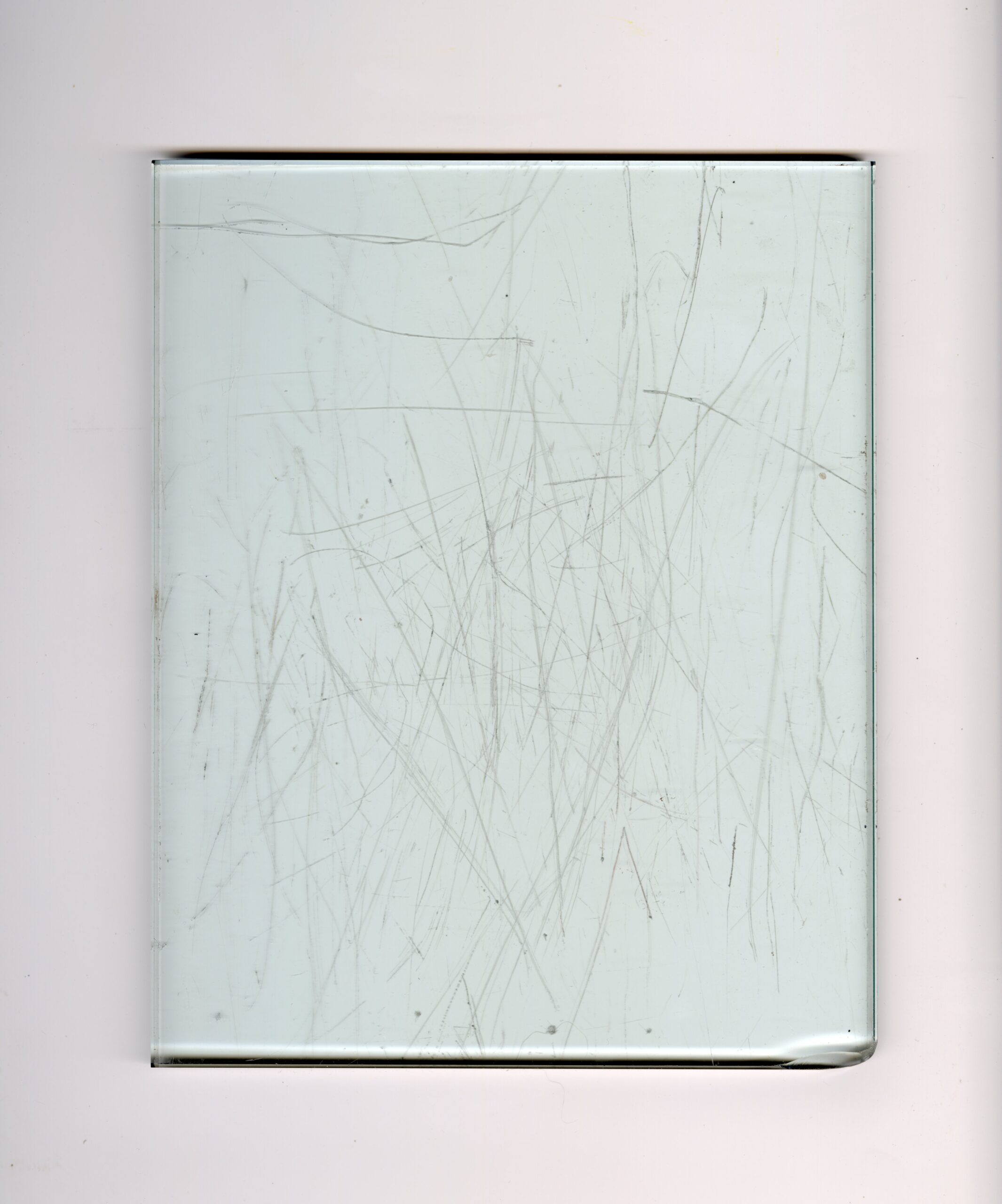
Untitled
Vitreographs
Each print is 11” x 15”; glass plate is 9” x 12”
A series of relief prints made at Ox-Bow School of Art, July 2023.
The glass plate was dragged across the ground’s surface; ink was applied to the plate’s surface and wiped away with a rag. Prints were made in succession, with the state of the plate after the previous print informing the nature of the next.
